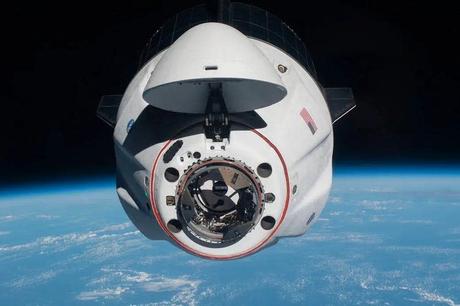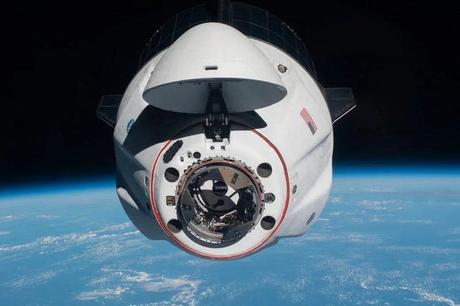NASA" src="https://s.yimg.com/ny/api/res/1.2/TBhhH2r.qt5Z0f0uHlBiJA-/YXBwaWQ9aGlnaGxhbmRlcjt3PTk2MDtoPTU0Mg-/https://media.zenfs.com/en/the_conversation_464/36391712250ee751a 46f9bb2d0f44156″ data src="https://s.yimg.com/ny/api/res/1.2/TBhhH2r.qt5Z0f0uHlBiJA-/YXBwaWQ9aGlnaGxhbmRlcjt3PTk2MDtoPTU0Mg-/https://media.zenfs.com/en/the_conversation_464/36391712250ee751a4 6f9bb2d0f44156″/>
People have long dreamed of setting foot on the moon and other planetary bodies like Mars. Since the 1960s, space travelers have donned suits designed to protect them from the vacuum of space and ventured into the unknown.
However, the Polaris Dawn mission, which will include the first spacewalk organized by a private company, has been postponed. This is due to complications in the design and development of a suitable space suit.
Moon suits are also one of the key elements of NASA's Artemis moon program yet to be delivered. A November 2023 report said the contractor making the suits will need to re-examine aspects of the design provided by NASA, which could cause delays.
Yet the first spacewalk, by Soviet cosmonaut Alexei Leonov, took place in 1965. Later, twelve NASA astronauts would walk on the lunar surface between 1969 and 1972, using technology that would be eclipsed by today's smartphones. So it's not unreasonable to ask why it can still be difficult to design and build spacesuits to do the same thing.
A lot has changed since the Apollo missions planted flags on the moon. The geopolitics driving space travel have changed and spacesuits are no longer expected to be just a form of protection. Instead, they are a crucial way to improve astronaut productivity. This involves a rethink of not only the suits themselves, but also the technology that supports them.


An array of powerful telecommunications technologies to connect astronauts to space stations and ground control sit alongside multisensory cameras, temperature readers and proximity sensors in today's spacesuits.
Situational awareness - understanding key elements in the environment, such as an astronaut's health - is a core principle of modern spacesuit design and critical to operator safety. A suit's ability to monitor heart rate and other vital signs is important in a vacuum, where oxygen levels must be constantly monitored.
The story continues
Expectations surrounding the risks astronauts take have changed for the better. And the level of investment required to produce a spacesuit necessitates that it can be used for future tasks, including possibly lunar settlements in the coming decades.
The trade-off engineers must make when integrating wearable technology like those already mentioned is weight. Will increased situational awareness result in a spacesuit that is too heavy to move effectively in?
When Elon Musk first hinted at space suit challenges for extravehicular activities for Polaris Dawn in a presentation to SpaceX employees in January it wasn't issues with connected technology he was discussing, but redesigning "the suit so that you actually move in it."
Environmental awareness
However, when talking about mobility in a spacesuit, you need to think about the tasks you want that mobility to support.
Before the advent of modern spacesuits, Apollo astronauts had difficulty completing missions. When drilling into the moon's surface with a hand drill to collect samples, astronauts found it difficult to apply enough downward force to counteract the moon's weaker gravity. It would not be until the invention of a gravity drill decades later that this problem would be addressed.
Current exploration of pneumatic exoskeletons, which provide the support needed for movement in low gravity, could be part of a solution. However, newer spacesuits may also need to communicate with hardware such as robotic drills that exist outside the suit. This will also necessitate more mobility in spacesuits.
Working with robots
Transferring tasks previously performed by humans to robots will be part of the future of space exploration. It's a primary way engineers can also improve the mobility of astronauts in spacesuits.
For example, when an astronaut takes a spacewalk to inspect the condition of part of a space station and make any repairs, he is supported by a robotic arm that keeps him from floating into space. Although this arm is connected, it is stiff and can restrict an astronaut's movement.
One approach currently being explored to extend this range of motion is a climbing robot, attached to both the astronaut and the space station, that an individual can control via their space suit. This would allow the astronaut to move around the space station faster and with a greater range of motion than before, allowing him to reach and repair hard-to-reach areas such as corners.
While the ultimate hope is that robots will be able to assess and repair any damage to the space station themselves, possible disruptions to normal operations require humans to be prepared to intervene. Possible disruptions could be natural, such as a small meteor shower damaging the robot. , or man-made, such as hacking by a hostile group or state.
For the types of activities we want to achieve in the future, this human-robot collaboration will be of great importance. Building a base on the moon, as both the US and China plan to do, will involve construction and drilling that humans will not be able to accomplish alone. Modern space suits will need to provide an interface to work with this new technology, and we can expect the suits to evolve in step with robotics.
The relationship between humans and robots is changing. It will move beyond spacewalks and the previous use of robots as limited tools, to a situation where they are collaborative partners in space. The goals of ten or twenty years from now, such as building settlements on the moon, exploring mineral deposits on the moon and efficiently repairing space station modules, can only be achieved with the help of robotics.
Modern spacesuits will provide an important foundation for this collaborative relationship and provide the interface where astronauts and robots can work together to achieve shared goals. So as we once again leave our footprints on other worlds, we will no longer be alone.
This article is republished from The Conversation under a Creative Commons license. Read the original article.


